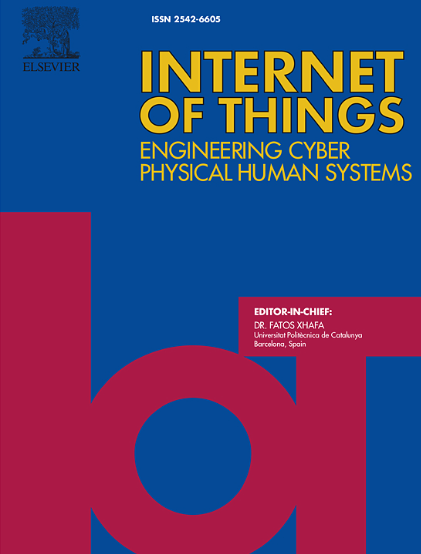基于dag的区块链自适应尖端选择算法增强的聚类联邦学习
IF 6
3区 计算机科学
Q1 COMPUTER SCIENCE, INFORMATION SYSTEMS
引用次数: 0
摘要
联邦学习(FL)支持在分布式数据上进行机器学习,同时保护客户端隐私。但是,FL面临着设备异构、中心服务器漏洞、数据非独立且分布相同等挑战。为了解决这些挑战,研究人员提出了一种异步和分散的集群FL (CFL),使用基于有向无环图(DAG)的区块链,称为专用DAGFL (SDAGFL)。然而,SDAGFL消耗了大量的通信和存储资源,对资源有限的设备造成了很大的负担。为了克服这些限制,我们提出了一种新的CFL框架,称为DAG-CFL。DAG-CFL由一个服务器层和一个客户端层组成,其中有多个服务器实现基于dag的区块链。在此框架内,我们提出了一种自适应尖端选择算法(ATSA)来选择最合适的尖端节点进行模型聚合。分析表明,与SDAGFL相比,DAG-CFL显著降低了客户端的通信和存储资源消耗。此外,分析了DAG-CFL的收敛性和ATSA的时空复杂度,证明了DAG-CFL的有效性。我们在MNIST和CIFAR-10数据集上对DAG-CFL和ATSA进行了评估。结果表明,DAG-CFL达到了与最佳CFL基线方法相当的性能,同时消除了对预定义簇数的需求。值得注意的是,与SDAGFL相比,DAG-CFL的精度提高了8%。实验结果还显示了DAG-CLF在各种数据分布转移场景下的鲁棒性,并表明ATSA可以有效地聚类客户端,MNIST数据集的模块化值为0.66,CIFAR-10数据集的模块化值为0.71。本文章由计算机程序翻译,如有差异,请以英文原文为准。

Clustered federated learning enhanced by DAG-based blockchain with adaptive tip selection algorithm
Federated learning (FL) enables machine learning on distributed data while preserving client privacy. However, FL faces challenges such as device heterogeneity, central server vulnerabilities, and non-independent and identically distributed data. To address these challenges, researchers proposed an asynchronous and decentralized clustered FL (CFL) using a directed acyclic graph (DAG)-based blockchain, called specializing DAG FL (SDAGFL). However, SDAGFL consumes high communication and storage resources, posing a substantial burden on devices with limited resources. To overcome these limitations, we propose a novel CFL framework called DAG-CFL. DAG-CFL consists of a server layer with multiple servers implementing DAG-based blockchain and a client layer. Within this framework, we propose an adaptive tip selection algorithm (ATSA) to select the most suitable tip nodes for model aggregation. The analysis indicates that DAG-CFL significantly reduces communication and storage resource consumption on the client side compared with SDAGFL. In addition, the convergence of DAG-CFL and the time and space complexity of ATSA are analyzed to show the effectiveness of DAG-CFL. We evaluate DAG-CFL and ATSA on cluster-wise MNIST and CIFAR-10 datasets. The results show that DAG-CFL achieves comparable performance to the best CFL baseline method while eliminating the need for a predefined number of clusters. Notably, DAG-CFL achieves an 8% increase in accuracy compared with SDAGFL. The experiment results also show the robustness of DAG-CLF in various data distribution shift scenarios and indicate that ATSA can effectively cluster clients with a modularity value of 0.66 for the MNIST dataset and 0.71 for the CIFAR-10 dataset.
求助全文
通过发布文献求助,成功后即可免费获取论文全文。
去求助
来源期刊

Internet of Things
Multiple-
CiteScore
3.60
自引率
5.10%
发文量
115
审稿时长
37 days
期刊介绍:
Internet of Things; Engineering Cyber Physical Human Systems is a comprehensive journal encouraging cross collaboration between researchers, engineers and practitioners in the field of IoT & Cyber Physical Human Systems. The journal offers a unique platform to exchange scientific information on the entire breadth of technology, science, and societal applications of the IoT.
The journal will place a high priority on timely publication, and provide a home for high quality.
Furthermore, IOT is interested in publishing topical Special Issues on any aspect of IOT.
 求助内容:
求助内容: 应助结果提醒方式:
应助结果提醒方式:


